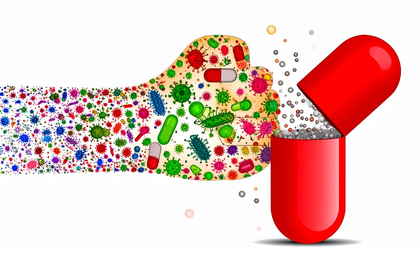Prevalence of multidrug-resistant organisms highest in Indian patients: Study
By IANS | Updated: November 18, 2025 18:35 IST2025-11-18T18:33:48+5:302025-11-18T18:35:12+5:30
New Delhi, Nov 18 More than 80 per cent of Indian patients carry multidrug-resistant organisms (MDROs) -- the ...

Prevalence of multidrug-resistant organisms highest in Indian patients: Study
New Delhi, Nov 18 More than 80 per cent of Indian patients carry multidrug-resistant organisms (MDROs) -- the highest globally, according to an alarming study on Tuesday reflecting the deep antibiotic resistance crisis in the country.
The large-scale international study published in the Lancet eClinical Medicine journal warned that India is at the epicentre of a superbug explosion as several patients in the country were found to carry multiple highly resistant organisms simultaneously.
The study released on the first day of the WHO’s World AMR Awareness Week (November 18-24) called for immediate policy changes and a national movement on antibiotic stewardship.
The multicentre study analysed over 1,200 patients across India, Italy, the Netherlands, and the US, undergoing a common endoscopic procedure.
In India, 83 per cent of patients carried MDROs -- the highest. In Italy, 31.5 per cent carried MDROs, while in the US it was 20.1 per cent and in the Netherlands 10.8 per cent.
The resistant bacteria discovered in Indian participants included 70.2 per cent with ESBL-producing organisms, which means common antibiotics won't work, and a staggering 23.5 per cent with carbapenem-resistant bacteria, which are resistant even to last-resort antibiotics. While CPE was nearly absent in the Netherlands, it was found to be rare in the US.
Conditions linked to higher MDRO prevalence included chronic lung disease, congestive heart failure, recent penicillin use, and frequent hospital admissions or prior procedures.
The presence of MDROs forces hospitals to use stronger and more toxic drugs, prolongs recovery, increases the risk of complications, and leads to substantially higher treatment costs, said authors from AIG Hospitals in Hyderabad.
For India, where nearly 58,000 newborn deaths each year are linked to resistant infections, and where untreatable bacteria are frequently encountered in ICUs and cancer centers, the study provides "unmistakable evidence that antimicrobial resistance (AMR) has become a national health emergency," the researchers said.
To curb the AMR, they recommended that healthcare professionals and citizens use/prescribe antibiotics more carefully and responsibly, so they remain effective for longer.
Further, regulating sales of prescription-only drugs, routine preprocedural screening, and considering single-use devices for high-risk patients to avoid transmission can be helpful to tackle the AMR burden.
Disclaimer: This post has been auto-published from an agency feed without any modifications to the text and has not been reviewed by an editor
Open in app